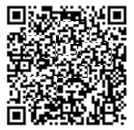[1] WORLD HEALTH ORGAINZATION.Global tuberculosis report 2024[R]. Geneva: World Health Organization. 2024.
[2] 李媛媛, 谢晶晶, 李树涛, 等. 2024年WHO全球结核病报告:全球与中国关键数据分析[J/CD]. 新发传染病电子杂志, 2024, 9(6): 92-97.
[3] 杨健, 张天华, 鲜小萍, 等. 西安市218株结核分枝杆菌耐药情况分析[J]. 检验医学, 2019, 34(5): 421-427.
[4] 蒋甜, 许红梅. 结核分枝杆菌耐药机制和耐多药结核抗菌治疗研究进展[J]. 中国实用儿科杂志. 2019, 34(9): 789-792.
[5] 陈玲. 耐多药结核病的流行病学概况、诊治现状、研究方向及展望[J]. 实用心脑肺血管病杂志, 2018, 26(11): 1-4.
[6] PRADIPTA IS, FORSMAN LD, BRUCHFELD J, et al.Risk factors of multidrug-resistant tuberculosis: A global systematic review and meta-analysis[J]. J Infect, 2018, 77(6): 469-478.
[7] SALARI N, KANJOORI AH, HOSSEINIAN-FAR A, et al.Global prevalence of drug-resistant tuberculosis: a systematic review and meta-analysis[J]. Infect Dis Poverty, 2023, 12(1): 57.
[8] 高孟秋, 高静韬, 马晓格, 等. 含德拉马尼方案治疗我国耐多药和利福平耐药肺结核患者的阶段性不良反应临床分析[J]. 中华结核和呼吸杂志, 2024, 47(7): 638-646.
[9] 孙慧娟, 刘小秋, 苏伟, 等. 2017-2021年中国9个省份利福平耐药结核病患者不良治疗结局发生情况及影响因素分析[J]. 中华流行病学杂志, 2025, 46(2):188-195.
[10] 李智炜, 赖铿, 李铁钢, 等. 2016-2020年广州市耐药结核病患者不良治疗结局状况及其影响因素分析[J]. 中国防痨杂志, 2022, 44(6): 600-607.
[11] LU C, XU Y, LI X, et al.Nutritional status affects immune function and exacerbates the severity of pulmonary tuberculosis[J]. Front Immunol, 2024, 15: 1407813.
[12] 丁芹, 顾颖, 戚之燕, 等. 耐药肺结核患者营养状况调查及其对免疫指标的影响[J]. 营养学报, 2021, 43(6): 619-621.
[13] 高孟秋. 《WS 288-2017肺结核诊断》新标准中关于临床诊断患者判定的解析[J]. 中国防痨杂志, 2018, 40(3): 243-246.
[14] BASTOS HN, OSóRIO NS, CASTRO AG, et al. Correction: A Prediction Rule to Stratify Mortality Risk of Patients with Pulmonary Tuberculosis[J]. PLoS One, 2020, 15(11): e0242455.
[15] MURTHY SE, CHATTERJEE F, CROOK A, et al.Pretreatment chest x-ray severity and its relation to bacterial burden in smear positive pulmonary tuberculosis[J]. BMC Med, 2018, 16(1): 73.
[16] RYU YJ, LEE JH, CHUN EM, et al.Clinical outcomes and prognostic factors in patients with tuberculous destroyed lung[J]. Int J Tuberc Lung Dis, 2011, 15(2): 246-250.
[17] 刘贵, 马皎洁, 李亮. 预后营养指数在结核病中的应用[J]. 中华结核和呼吸杂志, 2024, 47(10): 991-995.
[18] 侯婧, 方雪晖, 厉虹淼, 等. PNI与老年肺结核患者合并肺部细菌感染的相关性[J]. 中国老年学杂志, 2023, 43(8): 1826-1829.
[19] 谭守勇. 不容忽视耐多药结核病患者营养支持治疗的作用[J]. 中国防痨杂志, 2019, 41(2): 121-123.
[20] 高瑜, 仵倩红, 胡萍, 等. 非耐药和耐多药肺结核患者外周血T淋巴细胞亚群动态变化及临床意义[J]. 中国医院用药评价与分析, 2022, 22(6): 661-663, 667.
[21] LINDESTAM ARLEHAMN CS, LEWINSOHN D, SETTE A, et al.Antigens for CD4 and CD8 T cells in tuberculosis[J]. Cold Spring Harb Perspect Med, 2014, 4(7): a018465.
[22] 陈伟, 黄小晔, 彭丽, 等. 肝肾功能及血常规参数在肺结核患者药物治疗过程中的变化及临床意义[J]. 中国当代医药, 2022, 29(26): 145-148.
[23] 曾庆球, 王伟洪, 童照威, 等. 肺结核患者肺部空洞形成与免疫及营养状态的相关性分析[J]. 中华临床感染病杂志, 2021, 14(5): 358-363.
[24] LINDESTAM ARLEHAMN CS, LEWINSOHN D, SETTE A, et al.Neutrophil to Lymphocyte Ratio: An Emerging Marker of the Relationships between the Immune System and Diseases[J]. Int J Mol Sci, 2022, 23(7): 3636. |



